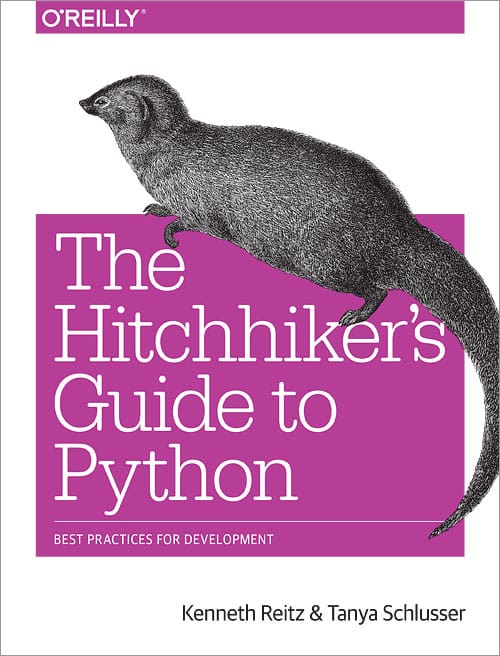Pipenv & Virtual Environments¶

This tutorial walks you through installing and using Python packages.
It will show you how to install and use the necessary tools and make strong recommendations on best practices. Keep in mind that Python is used for a great many different purposes, and precisely how you want to manage your dependencies may change based on how you decide to publish your software. The guidance presented here is most directly applicable to the development and deployment of network services (including web applications), but is also very well suited to managing development and testing environments for any kind of project.
Note
This guide is written for Python 3, however, these instructions should work fine on Python 2.7—if you are still using it, for some reason.
Make sure you’ve got Python & pip¶
Before you go any further, make sure you have Python and that it’s available from your command line. You can check this by simply running:
$ python --version
You should get some output like 3.6.2. If you do not have Python, please
install the latest 3.x version from python.org or refer to the
Installing Python section of this guide.
Note
If you’re newcomer and you get an error like this:
>>> python
Traceback (most recent call last):
File "<stdin>", line 1, in <module>
NameError: name 'python' is not defined
It’s because this command is intended to be run in a shell (also called a terminal or console). See the Python for Beginners getting started tutorial for an introduction to using your operating system’s shell and interacting with Python.
Additionally, you’ll need to make sure you have pip available. You can check this by running:
$ pip --version
If you installed Python from source, with an installer from python.org, or via Homebrew you should already have pip. If you’re on Linux and installed using your OS package manager, you may have to install pip separately.
Installing Pipenv¶
Pipenv is a dependency manager for Python projects. If you’re familiar with Node.js’ npm or Ruby’s bundler, it is similar in spirit to those tools. While pip can install Python packages, Pipenv is recommended as it’s a higher-level tool that simplifies dependency management for common use cases.
Use pip to install Pipenv:
$ pip install --user pipenv
Note
This does a user installation to prevent breaking any system-wide
packages. If pipenv isn’t available in your shell after installation,
you’ll need to add the user base’s binary directory to your PATH.
On Linux and macOS you can find the user base binary directory by running
python -m site --user-base and adding bin to the end. For example,
this will typically print ~/.local (with ~ expanded to the
absolute path to your home directory) so you’ll need to add
~/.local/bin to your PATH. You can set your PATH permanently by
modifying ~/.profile.
On Windows you can find the user base binary directory by running
py -m site --user-site and replacing site-packages with
Scripts. For example, this could return
C:\Users\Username\AppData\Roaming\Python36\site-packages so you would
need to set your PATH to include
C:\Users\Username\AppData\Roaming\Python36\Scripts. You can set your
user PATH permanently in the Control Panel. You may need to log
out for the PATH changes to take effect.
Installing packages for your project¶
Pipenv manages dependencies on a per-project basis. To install packages, change into your project’s directory (or just an empty directory for this tutorial) and run:
$ cd project_folder
$ pipenv install requests
Pipenv will install the excellent Requests library and create a Pipfile
for you in your project’s directory. The Pipfile is used to track which
dependencies your project needs in case you need to re-install them, such as
when you share your project with others. You should get output similar to this
(although the exact paths shown will vary):
Creating a Pipfile for this project...
Creating a virtualenv for this project...
Using base prefix '/usr/local/Cellar/python3/3.6.2/Frameworks/Python.framework/Versions/3.6'
New python executable in ~/.local/share/virtualenvs/tmp-agwWamBd/bin/python3.6
Also creating executable in ~/.local/share/virtualenvs/tmp-agwWamBd/bin/python
Installing setuptools, pip, wheel...done.
Virtualenv location: ~/.local/share/virtualenvs/tmp-agwWamBd
Installing requests...
Collecting requests
Using cached requests-2.18.4-py2.py3-none-any.whl
Collecting idna<2.7,>=2.5 (from requests)
Using cached idna-2.6-py2.py3-none-any.whl
Collecting urllib3<1.23,>=1.21.1 (from requests)
Using cached urllib3-1.22-py2.py3-none-any.whl
Collecting chardet<3.1.0,>=3.0.2 (from requests)
Using cached chardet-3.0.4-py2.py3-none-any.whl
Collecting certifi>=2017.4.17 (from requests)
Using cached certifi-2017.7.27.1-py2.py3-none-any.whl
Installing collected packages: idna, urllib3, chardet, certifi, requests
Successfully installed certifi-2017.7.27.1 chardet-3.0.4 idna-2.6 requests-2.18.4 urllib3-1.22
Adding requests to Pipfile's [packages]...
P.S. You have excellent taste! ✨ 🍰 ✨
Using installed packages¶
Now that Requests is installed you can create a simple main.py file to
use it:
import requests
response = requests.get('https://httpbin.org/ip')
print('Your IP is {0}'.format(response.json()['origin']))
Then you can run this script using pipenv run:
$ pipenv run python main.py
You should get output similar to this:
Your IP is 8.8.8.8
Using $ pipenv run ensures that your installed packages are available to
your script. It’s also possible to spawn a new shell that ensures all commands
have access to your installed packages with $ pipenv shell.
Next steps¶
Congratulations, you now know how to install and use Python packages! ✨ 🍰 ✨
Lower level: virtualenv¶
virtualenv is a tool to create isolated Python environments. virtualenv creates a folder which contains all the necessary executables to use the packages that a Python project would need.
It can be used standalone, in place of Pipenv.
Install virtualenv via pip:
$ pip install virtualenv
Test your installation:
$ virtualenv --version
Basic Usage¶
- Create a virtual environment for a project:
$ cd project_folder
$ virtualenv venv
virtualenv venv will create a folder in the current directory which will
contain the Python executable files, and a copy of the pip library which you
can use to install other packages. The name of the virtual environment (in this
case, it was venv) can be anything; omitting the name will place the files
in the current directory instead.
Note
‘venv’ is the general convention used globally. As it is readily available in ignore files (eg: .gitignore’)
This creates a copy of Python in whichever directory you ran the command in,
placing it in a folder named venv.
You can also use the Python interpreter of your choice (like
python2.7).
$ virtualenv -p /usr/bin/python2.7 venv
or change the interpreter globally with an env variable in ~/.bashrc:
$ export VIRTUALENVWRAPPER_PYTHON=/usr/bin/python2.7
- To begin using the virtual environment, it needs to be activated:
$ source venv/bin/activate
The name of the current virtual environment will now appear on the left of
the prompt (e.g. (venv)Your-Computer:project_folder UserName$) to let you know
that it’s active. From now on, any package that you install using pip will be
placed in the venv folder, isolated from the global Python installation.
For Windows, the same command mentioned in step 1 can be used to create a virtual environment. However, activating the environment requires a slightly different command.
Assuming that you are in your project directory:
C:\Users\SomeUser\project_folder> venv\Scripts\activate
Install packages using the pip command:
$ pip install requests
- If you are done working in the virtual environment for the moment, you can deactivate it:
$ deactivate
This puts you back to the system’s default Python interpreter with all its installed libraries.
To delete a virtual environment, just delete its folder. (In this case,
it would be rm -rf venv.)
After a while, though, you might end up with a lot of virtual environments littered across your system, and it’s possible you’ll forget their names or where they were placed.
Note
Python has included venv module from version 3.3. For more details: venv.
Other Notes¶
Running virtualenv with the option --no-site-packages will not
include the packages that are installed globally. This can be useful
for keeping the package list clean in case it needs to be accessed later.
[This is the default behavior for virtualenv 1.7 and later.]
In order to keep your environment consistent, it’s a good idea to “freeze” the current state of the environment packages. To do this, run:
$ pip freeze > requirements.txt
This will create a requirements.txt file, which contains a simple
list of all the packages in the current environment, and their respective
versions. You can see the list of installed packages without the requirements
format using pip list. Later it will be easier for a different developer
(or you, if you need to re-create the environment) to install the same packages
using the same versions:
$ pip install -r requirements.txt
This can help ensure consistency across installations, across deployments, and across developers.
Lastly, remember to exclude the virtual environment folder from source control by adding it to the ignore list (see Version Control Ignores).
virtualenvwrapper¶
virtualenvwrapper provides a set of commands which makes working with virtual environments much more pleasant. It also places all your virtual environments in one place.
To install (make sure virtualenv is already installed):
$ pip install virtualenvwrapper
$ export WORKON_HOME=~/Envs
$ source /usr/local/bin/virtualenvwrapper.sh
(Full virtualenvwrapper install instructions.)
For Windows, you can use the virtualenvwrapper-win.
To install (make sure virtualenv is already installed):
$ pip install virtualenvwrapper-win
In Windows, the default path for WORKON_HOME is %USERPROFILE%\Envs
Basic Usage¶
- Create a virtual environment:
$ mkvirtualenv project_folder
This creates the project_folder folder inside ~/Envs.
- Work on a virtual environment:
$ workon project_folder
Alternatively, you can make a project, which creates the virtual environment,
and also a project directory inside $WORKON_HOME, which is cd-ed into
when you workon project_folder.
$ mkproject project_folder
virtualenvwrapper provides tab-completion on environment names. It really helps when you have a lot of environments and have trouble remembering their names.
workon also deactivates whatever environment you are currently in, so you
can quickly switch between environments.
- Deactivating is still the same:
$ deactivate
- To delete:
$ rmvirtualenv venv
Other useful commands¶
lsvirtualenv- List all of the environments.
cdvirtualenv- Navigate into the directory of the currently activated virtual environment,
so you can browse its
site-packages, for example. cdsitepackages- Like the above, but directly into
site-packagesdirectory. lssitepackages- Shows contents of
site-packagesdirectory.
virtualenv-burrito¶
With virtualenv-burrito, you can have a working virtualenv + virtualenvwrapper environment in a single command.

